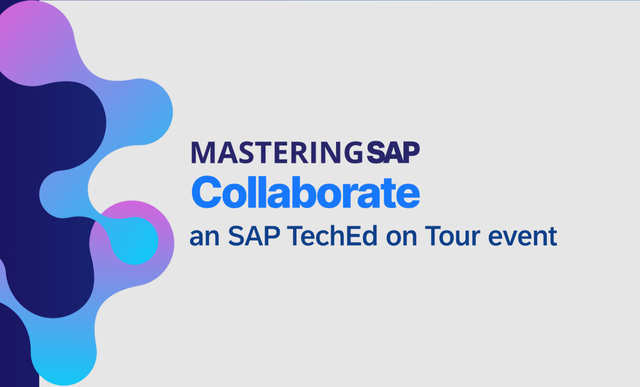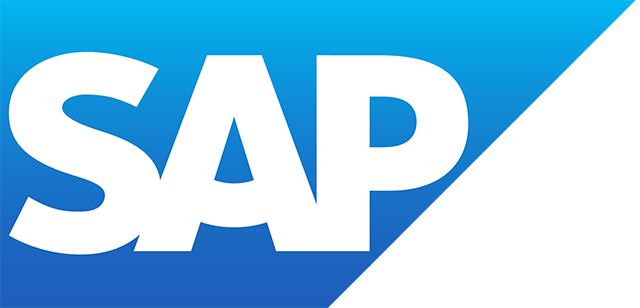SAP Risk Analysis
Filter By
Browse By
- SAP Analytics and AI
- SAP Application Development and Integration
- All SAP Application Development and Integration
- SAP ABAP
- SAP ABAP Development Tools
- SAP ABAP Test Cockpit
- SAP API Management
- SAP BAPI
- SAP Basis
- SAP BRF
- SAP Business Application Studio
- SAP CMS
- SAP Design Studio
- SAP Development Tools
- SAP DevOps
- SAP EAI
- SAP EDI
- SAP Extension Suite
- SAP Fiori
- SAP Fiori Elements
- SAP Integration Suite
- SAP Low Code Application Development
- SAP Low Code Automation
- SAP Netweaver
- SAP Release Management
- SAP UI5
- SAP Web Application Server
- SAP Web IDE
- SAP Business Process Management
- SAP Center of Excellence
- SAP CIO
- SAP Customer Experience
- SAP Data and Data Management
- All SAP Data and Data Management
- SAP BW
- SAP BW/4HANA
- SAP Crystal Reports
- SAP Data Archiving
- SAP Data Center
- SAP Data Governance
- SAP Data Integration
- SAP Data Migration
- SAP Data Quality
- SAP Data Services
- SAP Data Strategy
- SAP Data Visualization
- SAP Data Warehouse Cloud
- SAP DMS
- SAP Document Control
- SAP EIM
- SAP ETL
- SAP ETL Tools
- SAP HANA
- SAP HANA Administration
- SAP HANA Deployment Infrastructure
- SAP HANA Studio
- SAP Master Data
- SAP Master Data Governance
- SAP MDM
- SAP Enterprise Architect
- SAP Enterprise Asset Management
- SAP ERP
- SAP Finance
- All SAP Finance
- SAP Accounting
- SAP AR AP
- SAP Asset Accounting
- SAP Billing Systems
- SAP BPC
- SAP BRIM
- SAP Cash Management
- SAP Central Finance
- SAP Controlling
- SAP COPA
- SAP Cost Center Accounting
- SAP Currency Risk
- SAP e-invoicing
- SAP FICO
- SAP Finance Automation
- SAP Advanced Financial Closing
- SAP Financial Consolidation
- SAP Financial Planning
- SAP FX Risk
- SAP General Ledger
- SAP Global Tax Management
- SAP Hyperion
- SAP Order to Cash
- SAP Payment Processing
- SAP Profitability Analysis
- SAP Rebate Management
- SAP S/4HANA Finance
- SAP SWIFT Compliance
- SAP Treasury Management
- SAP Universal Journal
- SAP Governance Risk and Compliance
- SAP Human Capital Management
- SAP Intelligent Technologies
- SAP Platform and Technology
- All SAP Platform and Technology
- SAP Business Technology Platform
- SAP Cloud
- SAP Cloud Connector
- SAP Cloud Integration Platform
- SAP Cloud Migration
- SAP Cloud Platform
- SAP Cloud Providers
- SAP Cloud Strategy
- SAP Digital Signature
- SAP Container Platform
- SAP HANA Enterprise Cloud
- SAP Digital Asset Management
- SAP Smart Forms
- SAP HEC
- SAP Digital Integration Hub
- SAP Hyperscalers
- SAP Infrastructure
- SAP Messaging
- SAP Quality and Testing
- SAP Security
- SAP Spend Management
- SAP Supply Chain Management
- All SAP Supply Chain Management
- SAP APO
- SAP Asset Management
- SAP Business Network
- SAP Digital Manufacturing Cloud
- SAP Digital Twin
- SAP EWM
- SAP IBP
- SAP Inventory Management
- SAP Label Printing
- SAP Logistics
- SAP Manufacturing
- SAP Manufacturing Automation
- SAP MES
- SAP MII
- SAP MM
- SAP MRO
- SAP MRP
- SAP Order Management
- SAP Plant Maintenance
- SAP PLM
- SAP Production Planning
- SAP S&OP
- SAP SD
- SAP SPM
- SAP Supply Chain Planning
- SAP Track and Trace
- SAP Transportation Management
- SAP System Administration
What Is Risk Analysis?
Risk analysis is the assessment of potential risks on the business or market and the likelihood of adverse effects from those events. In a supply chain context, for example, companies model various disruptions to determine their impact and apply risk mitigation strategies to avoid them.
According to Investopedia, risk analysis can be divided between two types: qualitative and quantitative.
Qualitative analysis: Qualitative analysis incorporates a definition of uncertainties, evaluation of the potential impacts, and risk mitigation measures. Examples include SWOT analysis and cause and effect diagrams.
Quantitative analysis: Quantitative analysis relies on statistical modeling and assigning numeric values to potential risks. Within a risk model, those values produce graphical outputs to help determine risk mitigation strategies.
Through both risk analysis approaches, companies can glean an holistic view of their risk profile.
What Is Risk Analysis?
Risk analysis is the assessment of potential risks on the business or market and the likelihood of adverse effects from those events. In a supply chain context, for example, companies model various disruptions to determine their impact and apply risk mitigation strategies to avoid them.
According to Investopedia, risk analysis can be divided between two types: qualitative and quantitative.
Qualitative analysis: Qualitative analysis incorporates a definition of uncertainties, evaluation of the potential impacts, and risk mitigation measures. Examples include SWOT analysis and cause and effect diagrams.
Quantitative analysis: Quantitative analysis relies on statistical modeling and assigning numeric values to potential risks. Within a risk model, those values produce graphical outputs to help determine risk mitigation strategies.
Through both risk analysis approaches, companies can glean an holistic view of their risk profile.
SAP and Risk Management
As more companies migrate to SAP S/4HANA, it’s critical that their risk strategies are integrated within the system. SAP provides risk management solutions that put governance, risk, and compliance at the forefront of business activities.
According to SAP, “stakeholders want to see evidence, on demand and in real time, that an organization which they are backing is managing their financial, social, and environmental activities efficiently, profitably, and responsibly … Any risk management measures must focus on the specific value drivers unique to the business, and these can be difficult for you to identify. Managers must look beyond financial line items to the activities and processes that are integral to the organization’s business model.”
Further Resources for SAPinsiders
Building More Effective Access Control Through Business-Centric GRC. In this article, learn how companies are utilizing access control solutions to identify risk within their user base. These solutions and processes are often technical and driven from audit and IT perspectives with very little input from business users who might find the technical GRC language hard to decipher. That’s where the idea of business-centric GRC comes into play for access control — providing the business with easier to understand, less technical language so that they can better interpret the data.
Application Security Imperiled by Attackers. Application security is being threatened by cyberattacks on the application layer, such as SAP S/4HANA systems, which target valuable resources organizations store there. In this article, learn about new security concepts necessary to protect the “crown jewels” stored in SAP systems. Companies need to deploy real-time detection and response to deal with the rise in attacks against the SAP application layer level.
Vendors that can help SAP customers with risk analysis include: Appsian Security, DXC Technology, EcoVadis, and Onapsis.
831 results
-

 Premium
Premium
Use the Integrated Approach of SAP GRC 10.0 to Remediate Operational Residual Risk
Reading time: 21 mins
Mitigation controls in SAP GRC 10.0 enable you to respond proactively to operational risks. See how several SAP GRC 10.0 integration scenarios can be used in response to the operational risk of fraud and money loss in the procure-to-pay (P2P) process. Key Concept SAP GRC 10.0 helps your risk management department put in place on-time...…
-

 Premium
Premium
How to Validate Segregation of Duties Results
Reading time: 20 mins
Upon first running segregation of duties (SoD) reports in SAP BusinessObjects Access Control, management staff can become overloaded with data and assume that the results simply cannot be correct. It is then the responsibility of the owners of SAP BusinessObjects Access Control to prove that the reports are accurate. Step through the process that SAP...…
-

 Premium
Premium
Start Your Enterprise Risk Management Process with Diligent Risk Planning
Reading time: 13 mins
More and more, companies are recognizing the relevance of solid risk management to protect themselves from diverse threats and increase the success rate of their strategies and initiatives. The enterprise risk management (ERM) process can be divided into five phases: risk planning, risk identification, risk analysis, risk response allocation, and risk monitoring. Learn about how...…
-
-

 Premium
Premium
Set Up Risk Indicators as an Early Warning System and Leverage Actionable Reports for Risk Monitoring
Reading time: 15 mins
A risk monitoring framework delivers actionable alerts and reports that support decision makers in managing risk responses. It includes automated key risk indicators (KRIs) that trigger early warnings, meaningful reports of the current risk status, and records of risk incidents and losses as lessons learned. Learn how to set up KRIs in SAP BusinessObjects Risk...…
-

 Premium
Premium
Reduce Costs in Compliance Management with a Top-Down, Risk-Based Scoping Approach
Reading time: 15 mins
With the requirement of identifying and assessing the design and operating effectiveness of internal controls many companies have ended up producing too much documentation and performing more testing, resulting in increased costs of compliance. Regulatory agencies such as the US Securities and Exchange Commission and the Public Company Accounting Oversight Board (PCAOB) encourage companies to...…
-

 Premium
Premium
Use Result Analysis Functionality to Meet IFRS Requirements of Revenue Recognition
Reading time: 21 mins
Result Analysis functionality in SAP can help you meet the requirements of International Financial Reporting Standards (IFRS) and other accounting principles for recognizing revenues and costs for long-term contracts. Learn how to: • Use some of the key Result Analysis methods in your SAP system to recognize revenues and costs in a make-to-order business scenario.•...…
-

- SAP Systems Administration
 Premium
Premium
Get Your System Clean with Risk Analysis and Remediation
Reading time: 15 mins
Become and stay Sarbanes-Oxley compliant with Risk Analysis and Remediation. Learn about its main features, technical architecture, and setup. Key Concept SAP GRC Access Control delivers controls that identify and prevent access and authorization risks in cross-enterprise systems. The controls prevent fraud and reduce the cost of continuous compliance and control. SAP GRC Access Control...…
-
-

A Leader’s Guide to the SAP GRC Framework
Reading time: 14 mins
SAP GRC (Governance, Risk, and Compliance) is a crucial integrated framework that helps organizations navigate the complexities of compliance, risk management, and governance within increasingly regulated and threat-laden business environments, serving as both a tool and a strategic imperative for operational integrity.
-

 Premium
Premium
Define Risks and Functions with Risk Analysis and Remediation Rule Architect
Reading time: 14 mins
Discover the makeup and functionality of Rule Architect within SAP BusinessObjects Access Control Risk Analysis and Remediation. Key Concept Risk Analysis and Remediation (RAR) is part of SAP BusinessObjects Access Control. This capability helps all key stakeholders work in a collaborative manner to achieve ongoing segregation of duties (SoD) and audit compliance at all levels....…
-

 Premium
Premium
Manage Supply Chain Risks with SAP Supply Chain Performance Management 2.0
Reading time: 12 mins
SAP Supply Chain Performance Management 2.0 offers extended performance and risk indicators in a number of key areas, including the Supply Chain Council’s Supply Chain Operations Reference (SCOR) model. Learn how to effectively map these key risk indicators to an enterprise risk management program using SAP Supply Chain Performance Management 2.0 and SAP Risk Management...…
Become a Member
Unlimited access to thousands of resources for SAP-specific expertise that can only be found here.
Become a Partner
Access exclusive SAP insights, expert marketing strategies, and high-value services including research reports, webinars, and buyers' guides, all designed to boost your campaign ROI by up to 50% within the SAP ecosystem.
Upcoming Events
-

Mastering SAP Collaborate, an SAP TechEd on Tour event
November 12 - 14, 2025
Sydney, New South Wales
Australia
View Event
Related Vendors
Your request has been successfully sent

